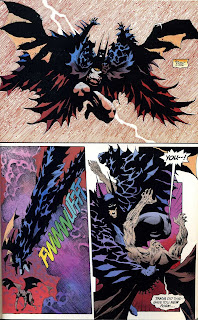It's All Hallow's Read (aka Halloween...with scary books). So here's a piece of flash fiction I had published in issue #2 of Firewords Quarterly, a literary magazine out of the United Kingdom.
Enjoy, and a have
a spooky Halloween.
-chris
I GOTTA GET OUTTA HERE
By C. M. Beckett
I need to get outta here. Winter ain’t even here an’ it’s
already too effin’ cold even with the friggin’ global warming.
Sorry, but I won’t curse in front of my Ma, don’t matter how old I
get. A mom takes care o’ you, provides for ya, keeps food on your
plate. You gotta appreciate that and show some respect.
Of course, things changed with the Little Big One. We could
feel it all the way over here. Some folks didn’t believe me. Little
tremors, like a shiver runnin’ through your boots. And then when it hit
the news sites. Nobody knew what to do. Sittin’ at home watchin’
crazies freakin’ out, killin’ their neighbors, drownin’ their kids. What
the heck?!
We did what we do best up here – hunker down and cut ourselves off
from everything else. It wasn’t too hard, livin’ on a farm an’ all.
Generations before us had done all right with it, and with the government goin’
ta hell (sorry, Mom) it seemed the best thing to do. Most people never
knew what to make of us up here anyway – ninety percent woods and nothin’ much
ta do ‘cept drink and terrorize.
At first, things were good. We didn’t need for much, just
had ta be smart, use what we found and not waste nothin’. Things’d be
back to normal soon enough and then we’d get back to headin’ down to the mall
and such.
That was a pipe dream.
Goin’ on twenty years now since it all went to crap, and still no
end in sight. Most o’ the woods is gone now. At least around
here. When the oil prices spiked durin’ the War, poachers swept in like
huge vultures, layin’ waste to practically the whole state. Now we got no
resources ta speak of. No forests. No topsoil. No birds, no
animals. Nothin’ worth a damn. Not here anyway.
So I need to move. No way to survive another winter here.
Tonight’s my last night. I managed to gather a few saplings
for one last meal before I hit the road. They’re still raw an’ smoke more
than burn, so I didn’t even bother with a pan, just threw it on the fire.
I like the skin blackened anyway, gives it more flavor.
Should be done soon. It was hard the first time, with
Gramps. Everybody squeamish, not wantin’ to partake an’ all. My
sister – she was always a bitch (sorry, Ma) – got up and walked outside.
Wouldn’t eat nothin’ and upset my Ma no end.
It’s how Gramps woulda wanted it. He’d lived a good life and
died o’ natural causes. He would'na wanted us to waste away too just
because o’ some old-school civilities. The rules had changed and we did
what we had to do to live.
My sister was next o’ course, but that wasn’t for quite a few
months. I dug right in that night. She’d fallen and hurt herself
somethin’ fierce. Not much we could do. No doctors left, and little
in the way o’ supplies. We did what we could. Made her
comfortable. Said some words over her from the Good Book. But it
wasn’t long before she was gone too.
That was last winter, which was pretty tough on all of us.
Not many made it to summer. We all knew what was comin’ but didn’t talk
much about it. How could we? We had to look each other in the eye
every day.
Now I’m it. The last one. I put that off as long as I
could. It was too hard. I mean, she’s my Ma. She brought me
into this shitfuck (sorry, Ma) world. But in the end, she understood
which one of us had a better chance o’ makin’ it.
And she knew that a mom takes care o’ ya, provides for ya, keeps
food on your plate.





































